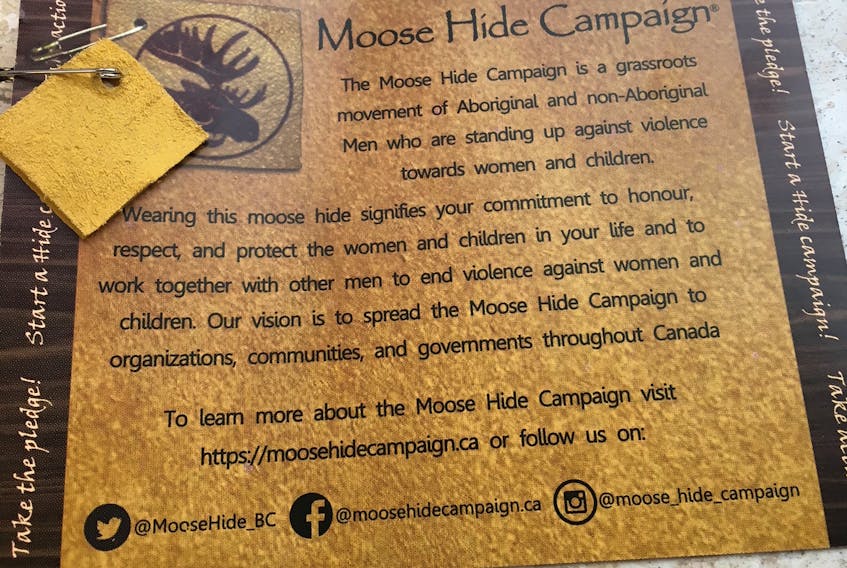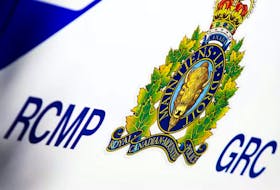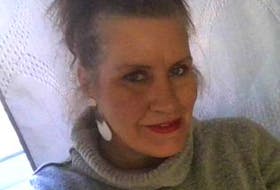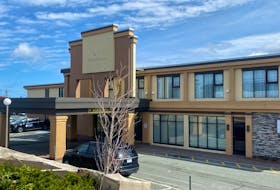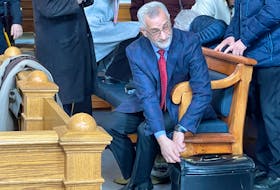On an early August morning in 2011, Paul Lacerte and his daughter, Raven, were hunting moose near the Highway of Tears in British Columbia.
The highway has become notorious as the place where dozens of Indigenous women and girls were last seen, or were found murdered.
The pair brought down a moose that morning to feed themselves and decided something needed to be done to spread awareness of the women and girls who had lost their lives in the area. They brought the moose home, cut its hide into small squares and started the Moose Hide Campaign.
The squares are worn to commemorate those lost and to keep the conversation going to seek an end to the disproportionate dangers faced by Indigenous women and girls across the country. This past Valentine’s Day, the campaign distributed its one-millionth moose hide pin.
On Wednesday, through a private member’s motion in the House of Assembly, Torngat Mountains MHA Randy Edmunds brought the campaign to the House of Assembly — the fourth provincial legislature to recognize the campaign.
Edmunds, an Inuk from Makkovik, says the campaign is primarily targeted toward Indigenous men, asking them to take leadership against violence against women.
“It was important to Paul and Raven when they got the initial idea because violence against women a lot of the time is violence from spouses, or they’re in a relationship,” Edmunds said.
“This recognizes that the indigenous men in our country are also ready to take a stand on violence against women, that they will pledge to protect those that they love.”
Edmunds is heading to Happy Valley-Goose Bay on Thursday to attend hearings of the Missing and Murdered Indigenous Women Inquiry. The inquiry recently asked for an extension of two years and has faced some criticism for how long the process has taken to this point.
Edmunds says the inquiry needs to take time to address the complex issues it’s seeking to study.
“I think the issue that we have to realize is that this inquiry has to address Indigenous women that have been murdered and are missing in this country. I feel we should give them every opportunity to get themselves organized,” he said.
“If it means taking a little longer, then by all means do it. Take your time to get it right.”
Edmunds says he knew a number of Indigenous women and girls who have gone missing.
“I attended a vigil here in St. John’s last fall and they started naming people who were murdered going back to the 1800s. When they started naming the names from 1970 to 2012, what surprised me was the number of women that I knew, that grew up with me, that I worked with,” he said.
“If I didn’t know them individually, I knew their families, I know of the tragedies. There were far too many.”
Edmunds says the square of moose hide sitting on his chest won’t end violence against Indigenous women and girls, but the conversation has to continue.
“We must continue to bring attention to this. Awareness is one of the biggest factors that can stop something like this. The Moose Hide Campaign is another example,” he said.
“I’d like to say that someday we’ll have enough attention that we’ll actually get rid of the problem.”
Twitter: DavidMaherNL

